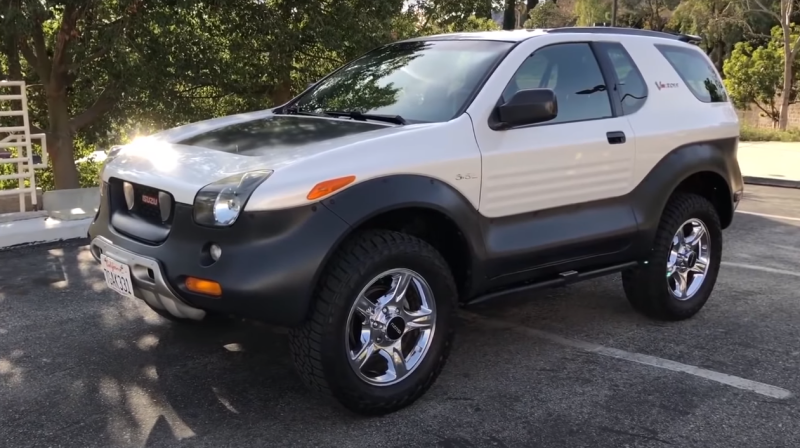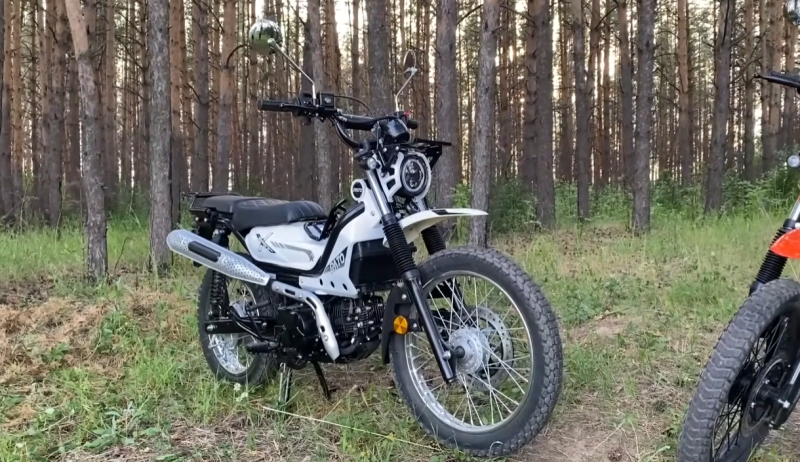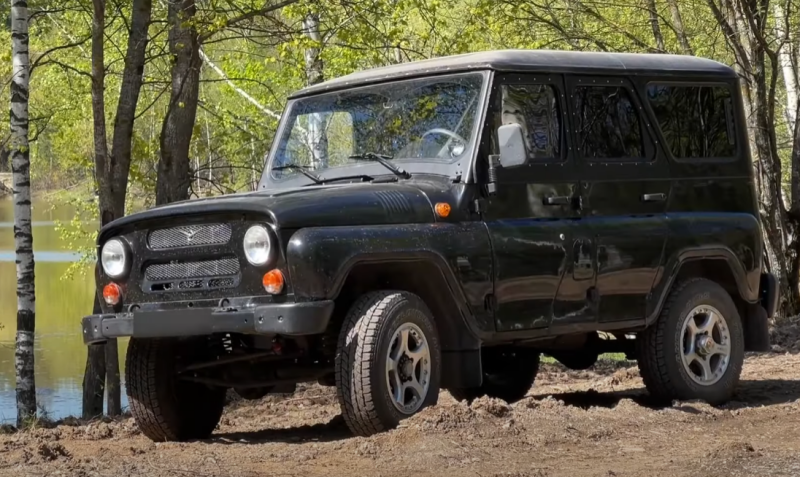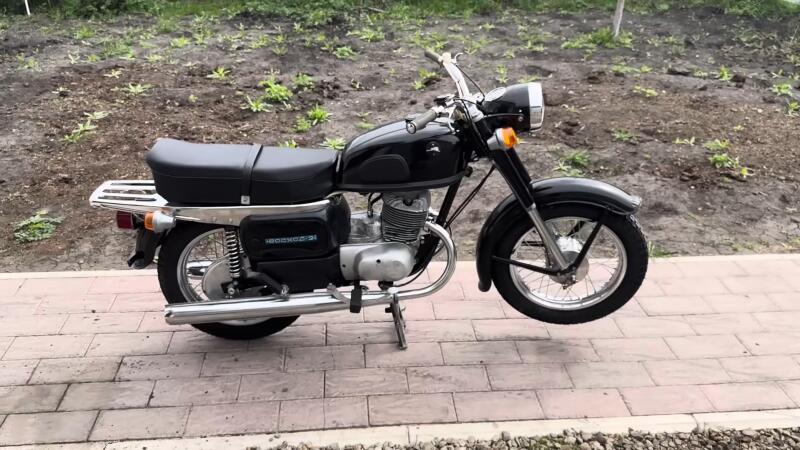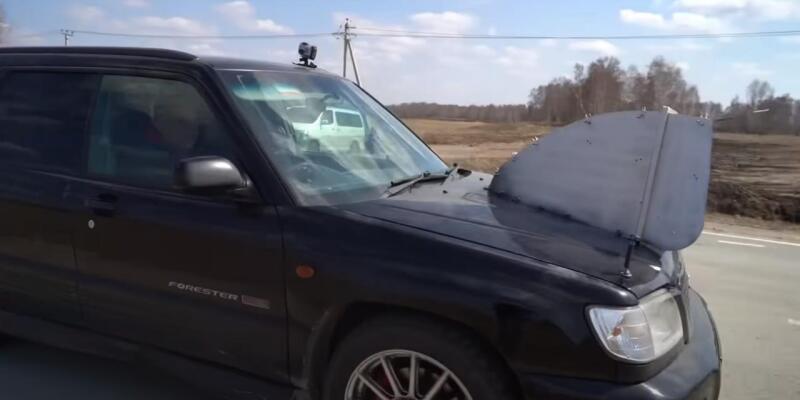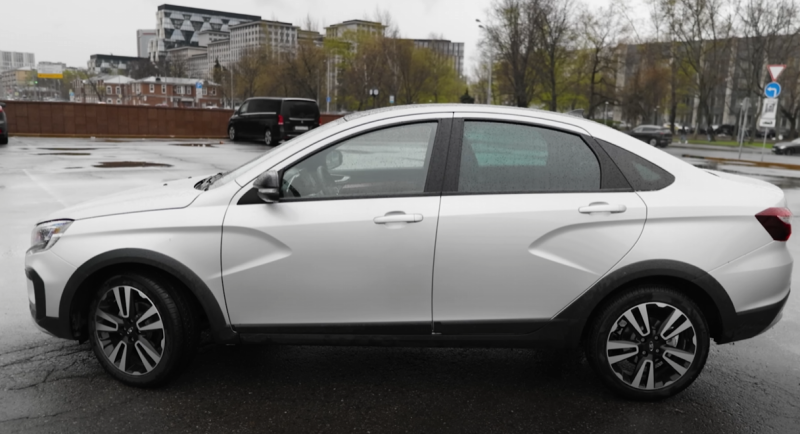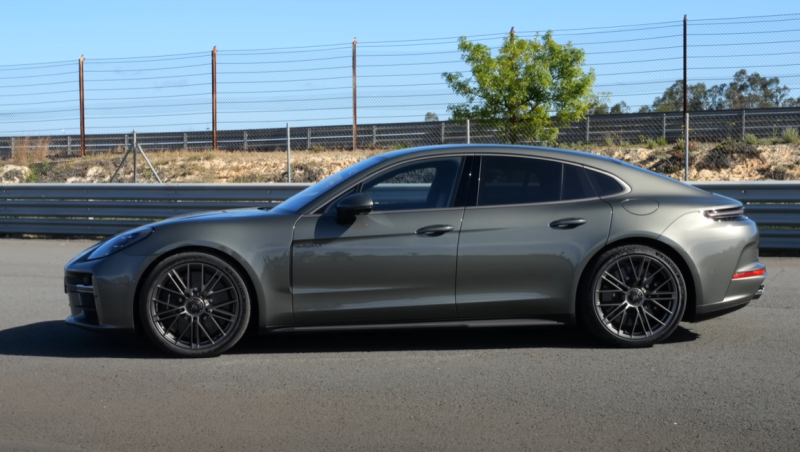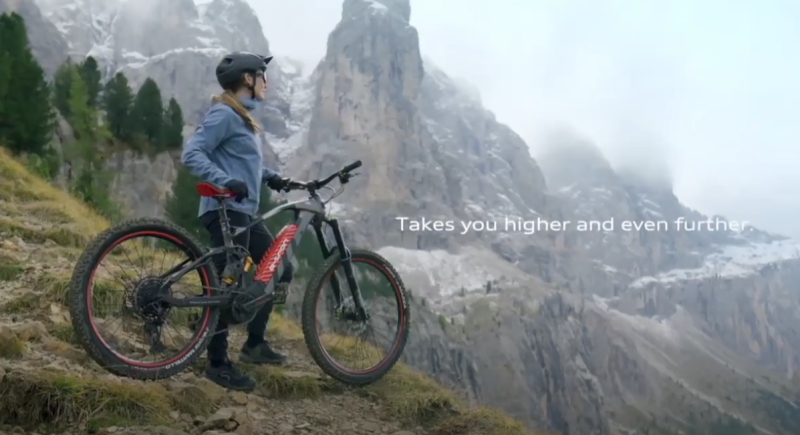Only the American writer had one subject, and its sound was sad. And the Japanese have as many as 50 metal domes, with the blows of tongues suspended inside, joyfully announcing to the surrounding area about the company’s achievements.
The bells are the only point of intersection between the Japanese car company and the great writer. Therefore, a retelling of Hemingway’s immortal work will not follow, but a review of the Isuzu Milestone SUV.
Jubilant chime from Honshu Island
The manufacturer especially insisted that the word “CROSS” in the model name should always be written in capital letters. As you say: we are ready to pronounce it in capitals, we are so imbued with respect for the car.
 Isuzu VehiCROSS is the most powerful SUV of its time. Photo: YouTube.com
Isuzu VehiCROSS is the most powerful SUV of its time. Photo: YouTube.comIn 1993 (the birth of the concept) and 1997 (putting it into production), Isuzu’s bell towers did not ring an alarm bell, but a solemn chime: the manufacturer rejoiced over the creation of a powerful SUV. The call from the island of Honshu excited the automotive community and reached remote corners of the planet.
And then it alarmed me, made me think and grieve: why was the coolest SUV so quickly discontinued? Why did Isuzu VehiCROSS fly into the world like a comet, rush along the conveyor belt at the same speed and leave it?
After all, 1853 cars for the domestic market and 4166 units for the North American market are a modest number. Four years of production - 1997-2001 - is also a short period.
Isuzu VehiCROSS and competitors
The car had enormous potential: its technical characteristics were ahead of its time, leaving its opponents behind. In those years, Toyota, Nissan and Mitsubishi were still using 3,0-liter V6 engines with cast iron blocks and 12-valve cylinder heads.
 The compact Isuzu VehiCROSS hid a lot of power under the hood. Photo: YouTube.com
The compact Isuzu VehiCROSS hid a lot of power under the hood. Photo: YouTube.comAnd Isuzu placed a 3,2-liter power unit with 24 valves under the hood. The cylinder block was made of aluminum. The architecture and number of cylinders were similar to its rivals - V6. The “50 bells” engines were also superior in output - 190-215 hp. With. versus 145-150 “horses” from competitors. And this was in 1993 on the road version! But, however, in the conceptual version of “VekhiKROSS”.
It turns out that the Isuzu all-terrain vehicle has made a serious bid and could become a measure of cross-country ability, performance, and power. But it was as if he deliberately allowed himself to be overtaken by his fellow soldiers: in 1994, the Toyota RAV4, and a couple of years later, the Honda CR-V with similar characteristics went into production. Why not "VehiKROSS"? Or was that his purpose?
About the company "50 Bells"
Isuzu is an old, well-promoted manufacturer. But it is better known for the cargo and commercial vehicles it has produced since its founding in 1916.
 Length of Isuzu VehiCROSS 4130 mm. Photo: YouTube.com
Length of Isuzu VehiCROSS 4130 mm. Photo: YouTube.comThe passenger car segment was also present in the line. The company exported the product overseas, but without much success. Things were going better in Southeast Asia. However, in 1987 the company became the world's largest manufacturer of freight transport, special equipment, and buses. Timber trucks, our veterans remember, were popular in the USSR.
But like many automakers, Isuzu suffered financial and commercial setbacks. The passenger sector brought big losses: by the 90s, the situation in this part became deplorable, if not catastrophic.
Let us note: Isuzu has always produced modest, utilitarian cars. Reliable in Japanese, of course. But nothing outstanding or memorable, despite a decent assortment.
Concept
And then, at the moment of the next crisis, “suddenly” happens. At the 30th Tokyo Motor Show 1993, the company presents its coolest SUV. The car blew the minds of those present, shocked by its exterior and power, incredibly packed into a compact body.
 Isuzu VehiCROSS visited its native elements. Photo: YouTube.com
Isuzu VehiCROSS visited its native elements. Photo: YouTube.comIt turned out that the company attracted the cream of the automotive industry to the development: design and styling gurus, talented engineers, innovators and innovators, gushing with ideas on the verge of the beyond.
The developers were well aware of the trends of the times and understood that the automotive industry was on the threshold of a new era. The need of the population has become SUV - sports-utilitarian transport. This was the birth of the crossover era we live in. The Isuzu VehiCROSS model was designed in this spirit.
 The central pillar, 30 cm wide, seemed to serve as the inscription "VehiCROSS". Photo: YouTube.com
The central pillar, 30 cm wide, seemed to serve as the inscription "VehiCROSS". Photo: YouTube.comThe company’s Brussels office was in full swing with the sole purpose of Isuzu telling the world from its “bell tower”: “Look what we can do!” That is, the project was purely image-based. Initially not profitable, but demonstrating the capabilities of the manufacturer.
In the name, if you look at the letters, they put “vehicle”, “vision”, “insight”, “move”, “intersection”. The car of the future is the meaning of creation.
They were going to stop at the 1993 concept, not fantastic and transcendental, but real. But the warm reception of the public and the approval of experts forced us to continue working.
Car review
The car had to be put into production. Easy to say, but more difficult to implement in practice. They spent 3 years on this, during which competitors jumped far ahead. It turned out that “VekhiKROSS” showed the way, but he himself remained in the rear?
 The whole world is at the feet of Isuzu VehiCROSS. Photo: YouTube.com
The whole world is at the feet of Isuzu VehiCROSS. Photo: YouTube.comThe fact is that we had to build it from what was on the table. And Isuzu Mu and Isuzu Bighorn were at hand. The base was taken from the first, and some of the units were removed from the second.
Some conceptual ideas could not be translated into 3-door production versions. For example, they wanted the hood to open forward, they dreamed of making a split rear door, and they planned to introduce a Sony satellite navigation system. In short, not everything was successful. But what happened is simply mesmerizing and doesn’t let you take your eyes off it.
Exterior
Unique, extraordinary, original - how many more words are needed to describe the Isuzu VehiCROSS. The skirt alone is worth it: the thick protective body kit is made of durable plastic.
 Unusual Isuzu VehiCROSS fuel tank flap. Photo: YouTube.com
Unusual Isuzu VehiCROSS fuel tank flap. Photo: YouTube.comThe armor (there is no other way to say it), which flows from the bumper to the fender, then to the sills and doors, was brazenly and firmly bolted to the body. Capital hardware and a metal gas tank flap add impressiveness and give a feeling of reliability.
Model sizes for Japanese and US markets:
✅ Length - 4130 mm
✅ Width – 1790, 1791 mm
✅ Height – 1710, 1699 mm
✅ Clearance - 195 mm
✅ Wheelbase – 2330, 2332 mm
✅ Weight – 1970, 2110 kg
The dimensions are really compact. In such a volume it was necessary to fit a powerful engine, an 85-liter gas tank, and other components. The fuel tank was placed at the rear under the bottom and was perfectly protected with a metal casing.
With the “other components” - the spare tire - a curiosity came out. There was no room for a full-sized wheel, so the wheel was placed in the trunk door. Moreover, from the inside. The shape of the rear window is curved and narrow. Visibility suffered, especially since the manufacturer did not provide a washer and wiper.
 Inside the Isuzu VehiCROSS. Photo: YouTube.com
Inside the Isuzu VehiCROSS. Photo: YouTube.comThe shortcoming was compensated for by a rear view camera (in Japanese versions) and an additional mirror on the wing (American version). Yes, the wide – 30 cm – central pillars also made it difficult to monitor the situation behind the car.
In general, the SUV turned out to be muscular. The anti-glare lining on the hood in the color of the skirt speaks about sporting intentions. The wheels are not small - 18 inches, but the first copies were shod with R16.
Interior
There are a lot of original solutions here. However, there are plenty of blunders. Let's take the seating: the front seats are welcome, but not everyone will get into the gallery. In any case, an adult, even with the backrest folded and the chair moved forward, will not squeeze through. For kids, that is. Well, SUV - for hunting, for auto racing, and for children in kindergarten.
But the seats couldn’t be cooler. Real sports anatomical Recaro - comfort, ergonomics, lateral support, adjustments. Another strong steel frame and dense padding.
 Recaro – Isuzu VehiCROSS sports seats. Photo: YouTube.com
Recaro – Isuzu VehiCROSS sports seats. Photo: YouTube.comThe steering wheel was also sporty. It was also one of the reasons why the model was considered unsafe. A conventional steering column is designed so that it breaks at the time of an accident: injuries are minimized. This is not possible in a racing design.
The interior lighting is interestingly organized: the ceiling lamp is turned on not from a button or lever, but by pressing the part itself. The mirror has tiny “reading lights” built into it. There are a lot of interesting things in the cabin, but the most remarkable thing was hidden under the hood.
Technical part
The gasoline engine located at the front was called 6VD1. We have already got an idea of the engine, let’s add a speed indicator of 170 km/h. Fuel consumption: city – 18 l/100 km, highway – 10 l for the same distance.
 Headlights with horns are a feature of the Isuzu VehiCROSS. Photo: YouTube.com
Headlights with horns are a feature of the Isuzu VehiCROSS. Photo: YouTube.comThe rear suspension has a continuous axle, 4-links and springs. At the front, double wishbones and torsion bars combat road imperfections. The box is installed 4L30E - automatic transmission at 4 speeds.
By default, the drive went to the rear axle, and the transmission of torque to the front wheels through a multi-plate clutch was controlled by the electronics. The rear axle has a self-locking gear and a reduction gear.
The car is well built and the design is simply timeless. The car does not look archaic on modern roads. However, our goal in this review was to figure out why the coolest SUV went out of production so quickly.
 Isuzu VehiCROSS: the lack of space in the trunk was compensated by roof rails. Photo: YouTube.com
Isuzu VehiCROSS: the lack of space in the trunk was compensated by roof rails. Photo: YouTube.comThe reasons were found out: it was an image model, with the help of which the manufacturer declared itself as a serious player in the automotive industry. "VehiKROSS" paved the way for sports-utilitarian equipment, and it is always difficult for pioneers.
Due to technical bells and whistles, the SUV was not cheap: the price of $31 thousand scared off buyers. The same “Sahara” (Jeep Wrangler) cost $24 thousand. And one more thing: with external brutality, security and power, the car posed a danger to riders, and it was not entirely convenient to use.
